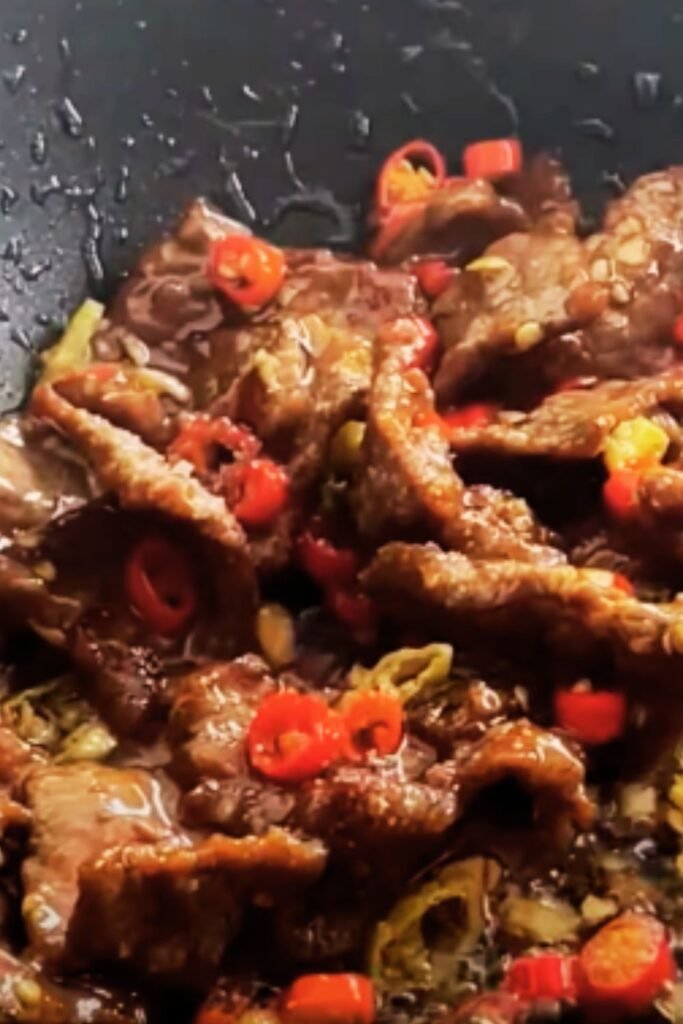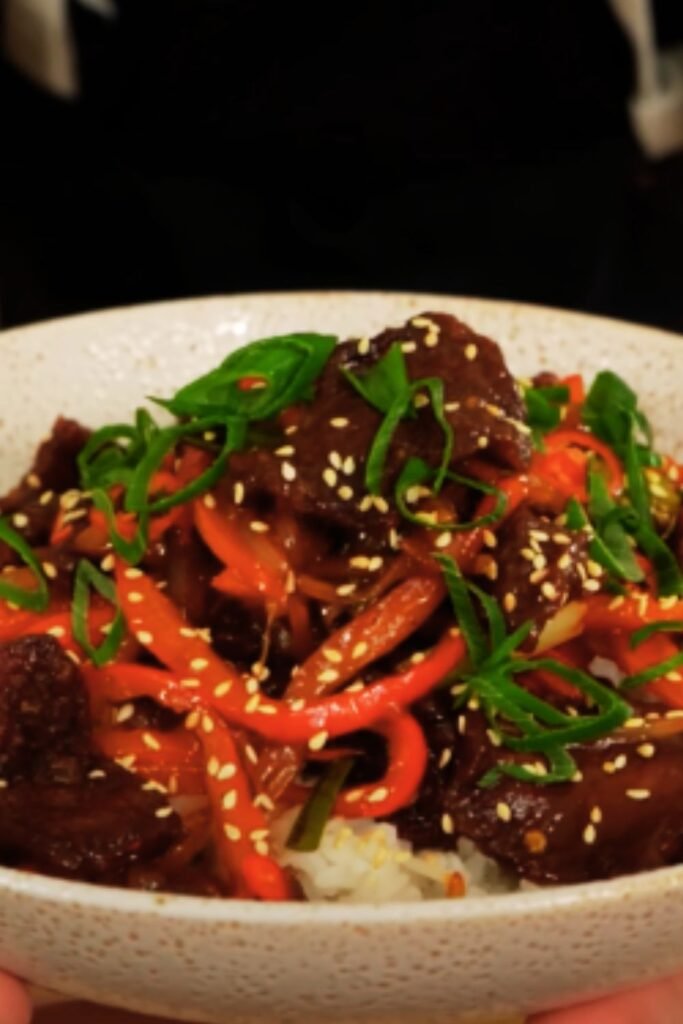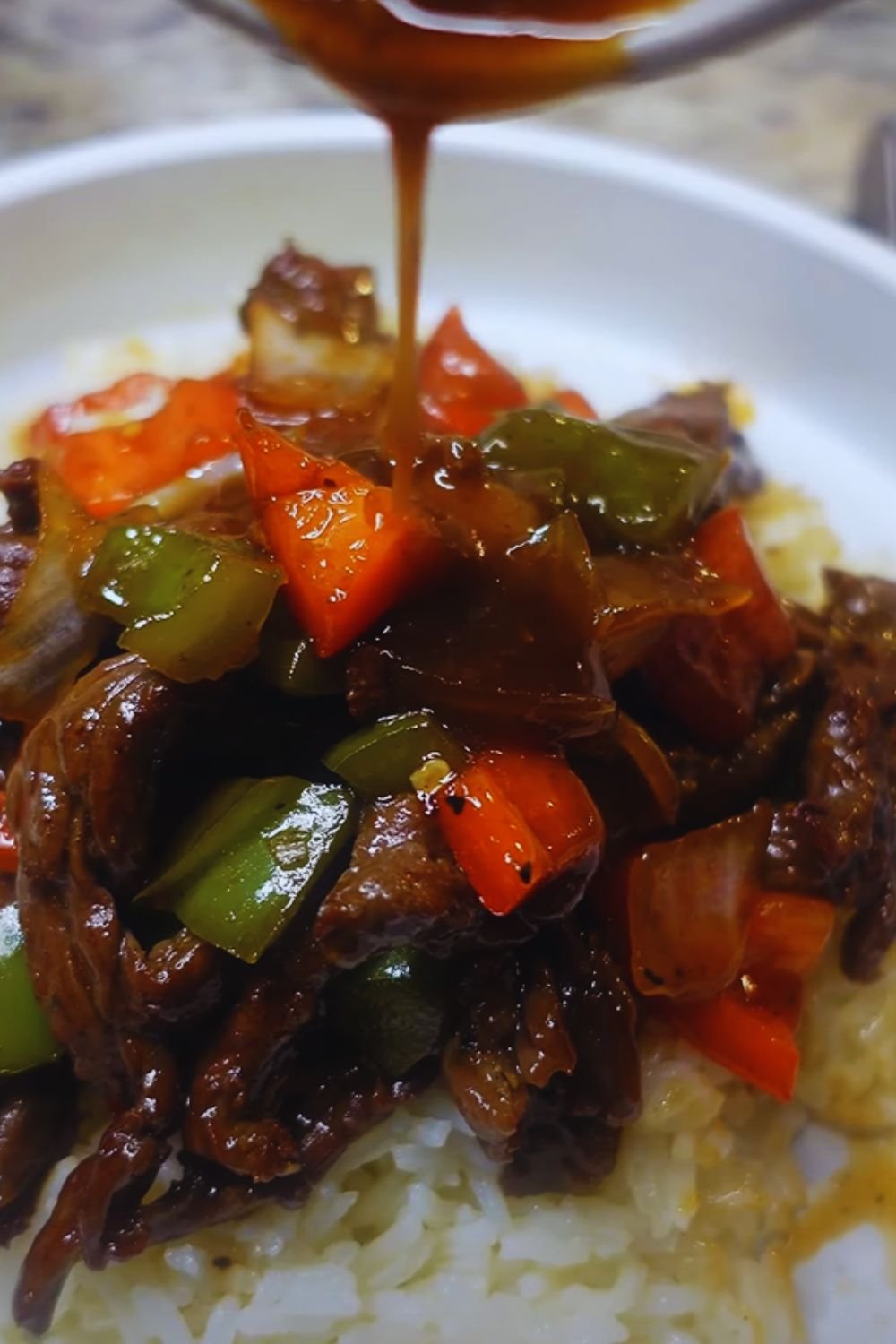There’s something magical about that perfect beef stir fry – tender, juicy strips of beef dancing with crisp vegetables in a savory sauce that clings to each morsel. After spending years perfecting my technique, I’m excited to share my foolproof method for creating restaurant-quality beef stir fry right in your own kitchen. This isn’t just another recipe; it’s your guide to mastering the art of stir-frying.
The Secret to Perfect Beef Stir Fry
The difference between a good stir fry and an exceptional one lies in the details. Through countless attempts and refinements, I’ve discovered that success comes down to three critical elements: proper meat preparation, precise heat control, and impeccable timing. Let’s dive into each component that makes this dish spectacular.
Choosing Your Beef

For the ultimate stir fry, I’ve found these cuts work best:
| Cut Name | Tenderness | Price Point | Best For |
|---|---|---|---|
| Flank Steak | Medium | $$ | All-purpose, excellent beef flavor |
| Ribeye | High | $$$ | Special occasions, superior marbling |
| Sirloin | Medium-High | $$ | Everyday stir-frying, good value |
| Skirt Steak | Medium | $$ | Strong beef flavor, requires careful slicing |
Essential Equipment
Before we begin, let’s ensure you have the right tools:
| Equipment | Purpose | Essential/Optional | Recommended Features |
|---|---|---|---|
| Wok | Primary cooking vessel | Essential | Carbon steel, flat bottom for home stoves |
| Chef’s Knife | Meat slicing | Essential | 8-inch minimum blade |
| Large Cutting Board | Prep work | Essential | At least 12×18 inches |
| Spider Strainer | Vegetable blanching | Optional | Bamboo or stainless steel |
| Meat Thermometer | Temperature control | Optional | Instant-read digital |
The Perfect Marinade Formula
I’ve developed this marinade ratio after years of experimentation:
| Ingredient | Amount per lb of beef | Purpose |
|---|---|---|
| Soy Sauce | 2 tablespoons | Flavor, tenderizing |
| Cornstarch | 1 tablespoon | Moisture retention |
| Rice Wine | 1 tablespoon | Flavor enhancement |
| Baking Soda | ¼ teaspoon | Tenderizing |
| White Pepper | ½ teaspoon | Aromatic heat |
| Sesame Oil | 1 teaspoon | Flavor complexity |

Step-by-Step Process
Beef Preparation
- Slice your beef against the grain into ⅛-inch thick strips
- Mix marinade ingredients in a bowl
- Combine beef with marinade
- Let rest for 30 minutes at room temperature
Vegetable Preparation
My recommended vegetable mix includes:
| Vegetable | Cut Size | Cooking Time | Special Notes |
|---|---|---|---|
| Broccoli | 1-inch florets | 2-3 minutes | Blanch first |
| Bell Peppers | 1-inch squares | 1-2 minutes | Remove seeds |
| Carrots | Julienned | 2-3 minutes | Cut on bias |
| Snow Peas | Whole | 1-2 minutes | Remove strings |
| Onions | Thin wedges | 2-3 minutes | Separate layers |
The Cooking Process

- Heat wok until smoking (literally smoking!)
- Add 2 tablespoons high-heat oil
- Stir-fry beef in batches (never crowd the pan)
- Remove beef, set aside
- Stir-fry vegetables in order of cooking time
- Combine everything with sauce
- Finish with sesame oil
Troubleshooting Common Issues
| Problem | Cause | Solution |
|---|---|---|
| Tough Beef | Overcooking or wrong slicing | Slice thinner, against grain |
| Watery Sauce | Too many vegetables at once | Cook in smaller batches |
| Burnt Garlic | Added too early | Add after meat is cooked |
| Mushy Vegetables | Overcrowding the wok | Cook in batches |
Serving Suggestions
I love serving this dish with:
- Jasmine rice
- Cauliflower rice (low-carb option)
- Brown rice
- Rice noodles
- Quinoa for a protein boost
Garnish Options
- Toasted sesame seeds
- Sliced green onions
- Fresh cilantro
- Crushed peanuts
Storage and Reheating
| Storage Method | Duration | Notes |
|---|---|---|
| Refrigerator | 3-4 days | Store sauce separately |
| Freezer | 2-3 months | Not recommended for vegetables |
| Meal Prep | 4 days max | Keep sauce on side |
Frequently Asked Questions
Q: Why does my beef always turn out tough?
A: The most common cause is overcooking. Remember, high heat and quick cooking are essential. Also, make sure you’re slicing against the grain and using the baking soda in the marinade as indicated.
Q: Can I make this ahead of time?
A: Yes, but with some precautions. You can prep all components separately up to 24 hours in advance. Store the marinated meat, cut vegetables, and sauce separately in the refrigerator. Combine only when ready to cook.
Q: What’s the best oil to use?
A: I recommend using oils with high smoke points such as peanut oil, grapeseed oil, or avocado oil. Avoid olive oil as it can’t handle the high heat needed for proper stir-frying.
Q: My vegetables get soggy – what am I doing wrong?
A: This usually happens when you overcrowd the wok or cook vegetables for too long. Work in batches and remember that vegetables should still be crisp-tender when done.
Nutritional Information
(Per serving, approximately 2 cups)
| Nutrient | Amount |
|---|---|
| Calories | 385 |
| Protein | 28g |
| Carbohydrates | 15g |
| Fiber | 4g |
| Fat | 18g |
| Sodium | 680mg |
| Iron | 3.5mg |
Remember, these numbers can vary based on your specific ingredients and portions.
Tips for Success
- Always start with room temperature meat
- Make sure your wok is screaming hot
- Don’t overcrowd the pan – work in batches
- Have all ingredients prepped before you start cooking
- Keep your ingredients moving in the wok
- Time each component carefully
- Season consistently throughout the cooking process
Making the perfect beef stir fry is a journey, but with these guidelines and a bit of practice, you’ll be creating restaurant-quality dishes in no time. Remember, the key is in the preparation, proper heat management, and timing. Don’t be afraid to experiment with different vegetable combinations and adjust the seasoning to your taste. Happy cooking!


